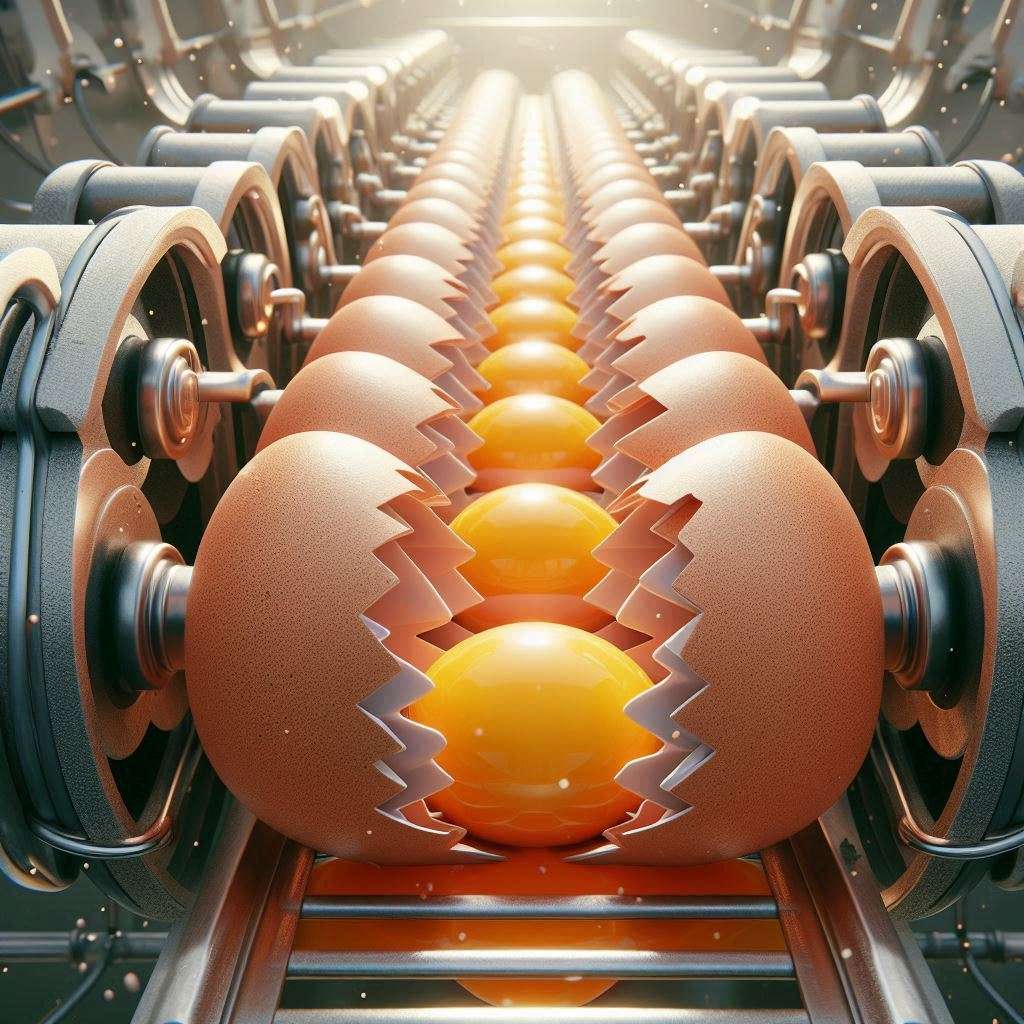

The egg movement on a conveyor belt requires lots of maintenance because of the nature of the egg. Although the breaking rate would be very low, their shells have some dirt on them. That dirt can get stuck on the conveyor belt to contaminate other eggs. Since eggs need food-grade material for safe handling, conveyor belts must qualify. This contamination can cause serious problems for the end consumers if regular cleansing is not done. To deal with such challenges, the poultry industry has to choose user-friendly conveyor belts. They have to meet hygienic requirements and also contribute to high egg quality. All these demands can be fulfilled only if the correct conveyor belt type is installed.
The industry has two common types: perforated and non-perforated egg belts. They have some differences, which can make the selection process difficult. What are those factors, and how do they impact hygiene and egg quality? Find out below.
These are the egg belts with large holes in a balanced way. These holes are not just random; they are designed to match the shape of the eggs’ bottom. Also, these holes are placed precisely from each other to place eggs safely. Once the eggs settle on the conveyor belt, the belt doesn’t let them roll anywhere. The holes hold the eggs in specific positions for stable movement. Then, there is no risk of eggs rolling from the belt.
Since the eggs don’t roll, the stability reduces the risk of damage. It has a direct impact on egg management cost reduction. Poultry industries know the effects of damaged eggs on the overall cost of operations. Perforated egg belts have a huge role in the egg industry. The entire food industry depends on the consistent supply of eggs, which rely on the perforated belts to remain safe.
Then, there are non-perforated egg belts, which are more common in the industry. They have a smooth surface without holes, which is as crucial as the perforated type. They are helpful for slow egg movement, where there is no risk of rolling. In addition, they are cost-effective because of their simple design. Since they are simple and without holes, they are easy to clear. Their smooth surfaces require less effort for the cleansing process.
Since perforated belts have holes, their cleansing process is challenging. Each hole requires special effort to be cleaned. However, a non-perforated belt requires a simple cleaning method. That affects the time, effort, and cost of maintenance. Although perforated belts keep the eggs more safely, the only challenge with them is maintenance. These differences matter a lot when it comes to the industrial level. Since these belts are long and wide, maintenance also requires more time.
Since non-perforated conveyor belts mainly have a chevron pattern, eggs can move safely. This pattern also contributes to the stable movement of eggs one by one. The chevron pattern increases traction for the eggs, primarily when they descend through an inclined plane. Some conveyor systems have inclined paths that could be problematic for products like eggs.
However, the chevron pattern holds the eggs to some extent. This pattern is less effective for inclined positions but highly effective for x-axis positions. Therefore, most conveyor belts have this standard pattern for good traction. Besides, some other patterns can be better for some conveyor machines. What kind of product you move on the belt decides you better about the pattern selection.
When the eggs are placed on the conveyor belt, they require space between each other. If any egg rolls from its place for any reason, there must be enough space between them. That will allow the workers to save other eggs from any collision. Non-perforated egg belts have holes, which means they need more space. This allows the eggs to stay in their positions without losing stability.
That factor affects the egg quality for the final users. Consumers get the best quality of eggs when companies follow standard procedures. Installing perforated egg belts ensures the eggs remain stable in their specific positions. Thus, they do not collide or fall from the belt during the movement. The conveyor system is supposed to maintain a precise speed and balance for the safety of eggs. Installing perforated types increases the safety of eggs because of their holes. Some companies offer customized sizes in length, width, thickness, and hole sizes. It helps poultry businesses to place all sizes of eggs on these belts. Thus, the egg management process becomes more systematic and safer.
The cleansing process of non-perforated belts is more straightforward than perforated ones. The reason is the structural difference between them. However, the non-perforated type has a chevron pattern, which might hold some dirt. If we compare it with the perforated belt, it has holes but a smoother surface than the other one. That smooth surface does not hold any dirt on it.